Dr. Seuss Use of Racist Images
Theodor Seuss Geisel (aka Dr. Seuss) created thousands of cartoons, illustrations, paintings, sculptures, and stories over the course of his 70-year career. While the vast majority of the works he produced are positive and inspiring, Ted Geisel also drew a handful of early images, which are disturbing. These racially stereotypical drawings were hurtful then and are still hurtful today. However, Ted’s cartoons and books also reflect his evolution. Later works, such as The Sneetches or Horton Hears a Who!, emphasize inclusion and acceptance. Ted would later edit some of his inappropriate images, depicting his characters in a more respectful manner.
Born in 1904, Ted Geisel grew up in Springfield, Massachusetts. Well before any of his iconic books were written, he embraced the Dr. Seuss moniker, making his living in New York City (1927–1941) writing and cartooning for several popular magazines: Judge, Look, The Saturday Evening Post, New York Woman, Stage, and Vanity Fair. His famous “Flit” advertisements for Standard Oil were carried in newspapers around the country, making him a “print celebrity.” Yet, while everyone recognized the name Dr. Seuss, few actually could pick out the man, Ted Geisel.
Stunned by the Great Depression and the onset of War in Europe, in January 1941, Dr. Seuss joined ranks with the bunch of “cockeyed crusaders” at PM magazine, producing three or more cartoons a week assailing the “The Axis Powers,” and finding himself a staunch supporter of President Roosevelt, who felt America’s entry into the War was inevitable. “PM was against people who pushed other people around,” Ted said. “I liked that.”
Still, it was not enough for Ted. On January 7, 1943, Captain Theodor Seuss Geisel was inducted into the army, assigned to the Information and Education Division. Within a few weeks he joined Frank Capra’s unit at “Fort Fox.” As a creative, he wasn’t alone in making this sacrifice. Historian Paul Horgan, screenwriter Leonard Spigelgass, composer Meredith Willson, novelist Irving Wallace, and illustrator P.D. Eastman worked with him alongside the civilian animators, Chuck Jones and Friz Freleng of Warner Brothers. Ted mustered out on January 13, 1946 as a lieutenant colonel, receiving the Legion of Merit for “exceptionally meritorious service in planning and producing films, particularly those utilizing animated cartoons, for training, informing, and enhancing the morale of troops.”
When Ted first began to write for children in 1937, many representations of people of color in the media were unfortunately depicted through racial stereotypes. In his first book, And to Think That I Saw It on Mulberry Street, his work was no exception. For example, to represent a lone Asian character, Ted employed “traditional clothing” and chopsticks to depict his ethnicity. He originally referred to this character as a “Chinaman” and showed his skin color as yellow. It is important to note that in a later reprint he removed the color and changed the text to “a Chinese man.”
Geisel’s great nephew Ted Owens recalled his uncle’s decision to make that change: "It was the first time he had changed one of his books . . . . Art and humanity are always evolving."
Mulberry Street was written in 1937. By contrast, the much-beloved The Sneetches was written in 1961 just as the Civil Rights Movement was well underway. Ted wrote The Sneetches as a parable about equality. By drawing bird-beings, he transcended the boundaries and pitfalls of using humans as characters, and allowed all readers to relate to the characters as best they could. On March 2, 2016, President Obama agreed with Dr. Seuss telling a group of interns: “Pretty much all the stuff you need to know is in Dr. Seuss. It’s like the Star-Belly Sneetches, you know? We’re all the same, so why would we treat somebody differently just because they don’t have a star on their belly?”
“Justice is not always about canceling someone and their body of work. Sometimes it looks like providing room for restorative justice to take place,” writes Danielle Slaughter for Mamademics. “In my opinion, Dr. Seuss, using the remainder of his career to focus on writing books full of important lessons, is an example of restorative justice.”
Slaughter also notes that three of Dr. Seuss’s most well-known later works, Horton Hears a Who!, The Lorax, and The Sneetches, “teach about the importance of inclusion and acceptance of others and yourself.”
In his book, Becoming Dr. Seuss: Theodor Geisel and the Making of an American Imagination, biographer Brian Jay Jones says that Dr. Seuss drew some “racist stereotypes in his early work.” Jones told The San Diego Union-Tribune: “As I say in the book, it’s not a great look for him. But he evolves.” By the end of the 1950s, Geisel had written Horton Hears a Who!, which is dedicated to a Japanese friend and is seen by scholars now as an apology for the earlier cartoons. He’d written Yertle the Turtle, an anti-fascist send-up of Hitler, and he’d penned a magazine story that would become the anti-discrimination book The Sneetches. “I don’t think you write a book like The Sneetches if you haven’t evolved,” Jones said.
Dr. Seuss’s later works show an evolution of values and beliefs. Those who knew him believe that if he were alive today he would have jumped at the chance to be a part of the country’s evolving dialogue about diversity and inclusion.
